Reflecting on my journey in creating a vibrant living space, I see color's power in interior design. Colorful home design changes a room's mood and atmosphere. It's key to know the basics of interior design. This guide will share how to master colorful home design, helping you create a space that shows your personality and style.
Knowing interior design basics is vital for a beautiful and functional space. Colorful home design is more than picking colors you like. It's about creating a space that's cohesive, harmonious, and promotes well-being and happiness. I'll cover topics like color psychology, mastering the color wheel, and using neutral colors as a base.
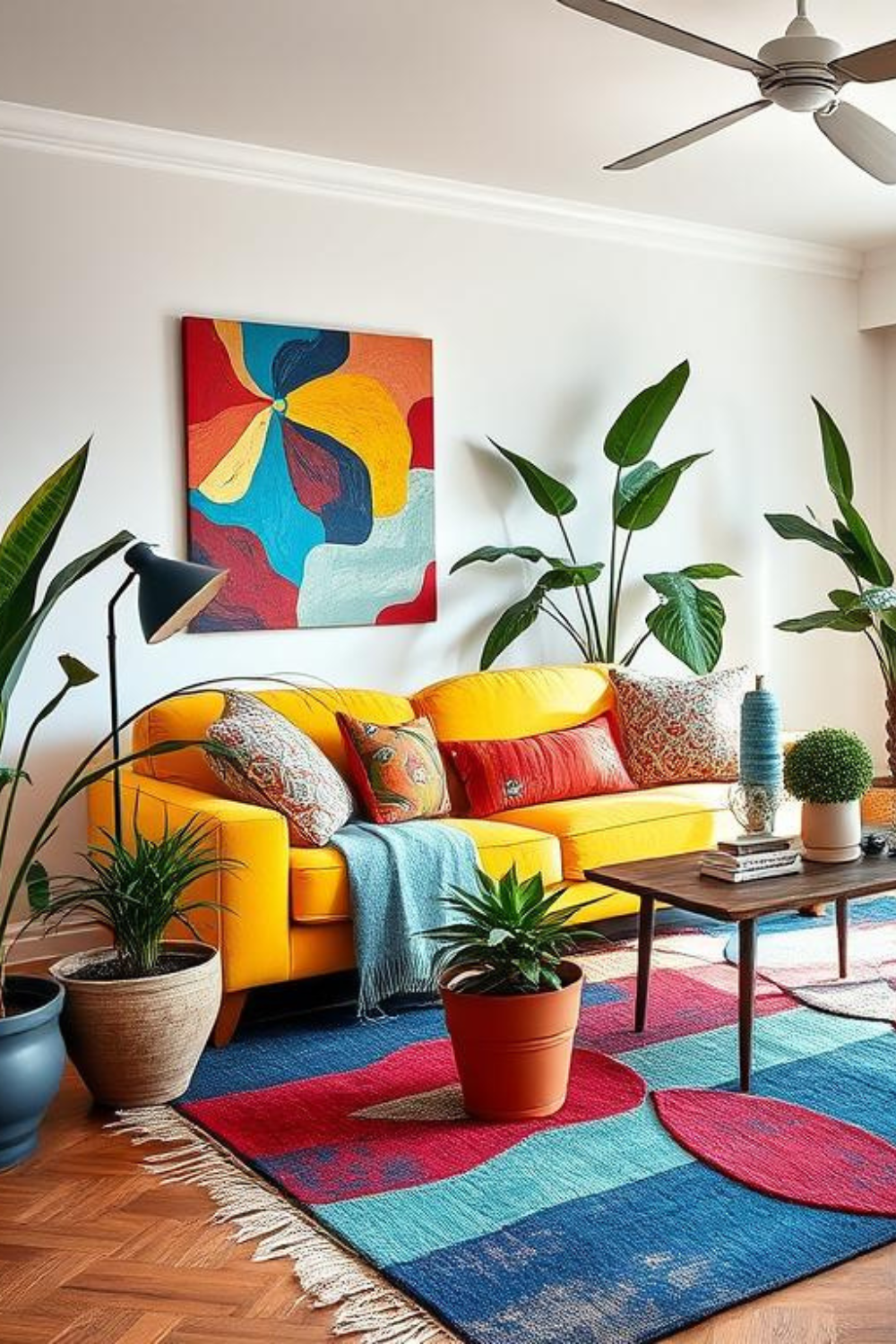
In the next sections, we'll explore colorful home design. I'll share practical tips and advice for creating a unique space that reflects your style. From interior design basics to adding color, I'll guide you to create a space you love.
Key Takeaways
- Understanding the basics of interior design is essential for creating a harmonious and beautiful space
- Colorful home design has the power to impact the mood and atmosphere of a room
- Mastering the color wheel is crucial for creating a cohesive and harmonious space
- Working with neutral colors as a foundation can help to create a sense of calm and serenity
- Adding pops of color can help to add personality and style to a room
- Creating a colorful home design requires a deep understanding of the psychology behind color choices
Getting Started with Colorful Home Design: Understanding the Basics
When I started decorating with color, I saw how it can change a space. Here are some home decor tips to help you begin.
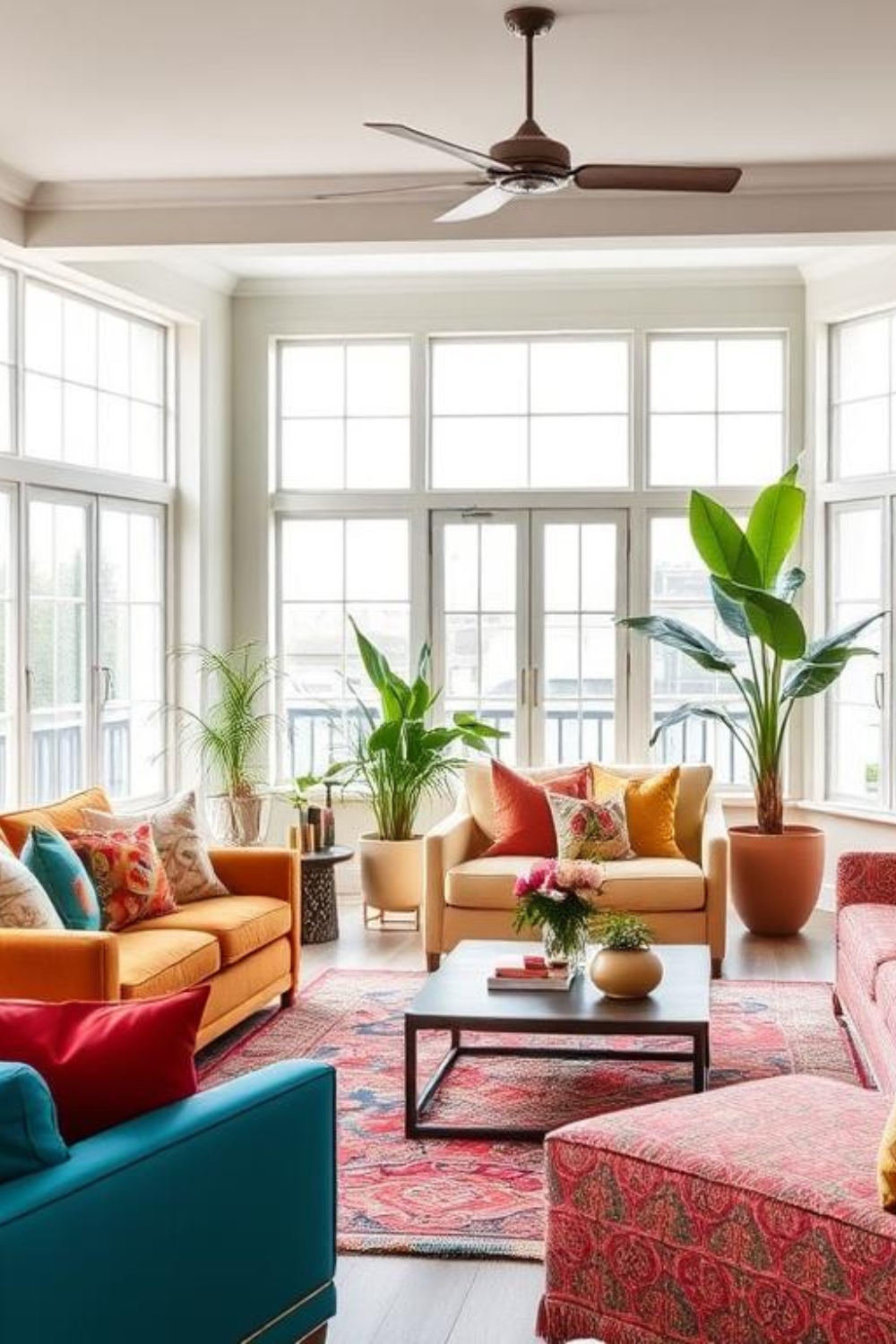
Color is key in interior design. It sets the mood and makes your home look better. To create a colorful design, focus on these important points:
- Balance: Spread colors evenly for harmony in the space.
- Contrast: Use contrasting colors to add depth and interest.
- Harmony: Choose colors that go well together for a cohesive look.
Learning these basics will help you create a colorful home. Your home will be both lively and welcoming.
The Psychology Behind Color Choices in Interior Design
Colors greatly affect how we feel at home. Knowing color psychology in home design lets me make spaces that feel right.
In bedrooms, I pick cool blues to help us relax and sleep better. These colors make the room a peaceful place to unwind after a busy day
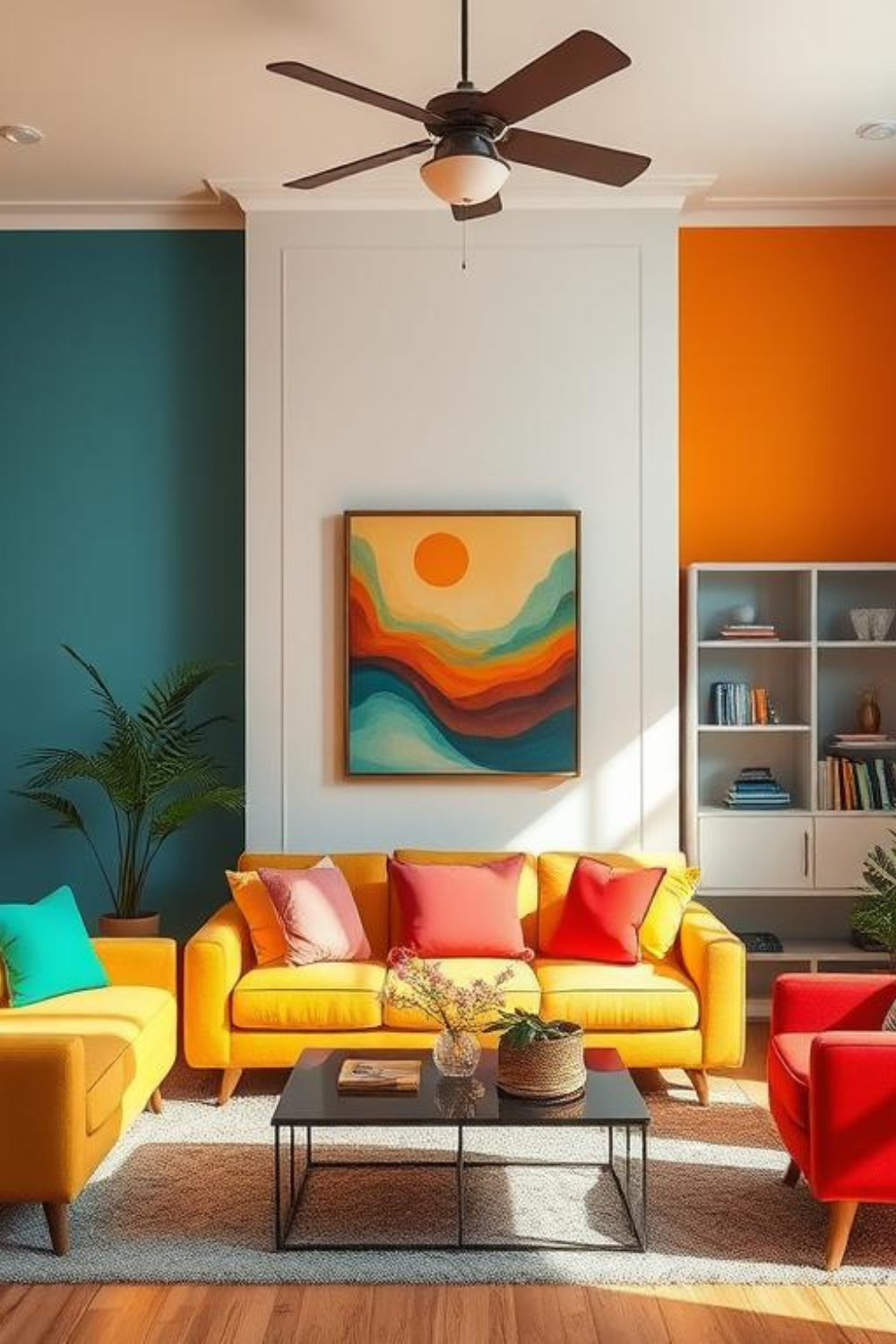
For home offices, I choose vibrant interior design with energizing yellows. Yellow boosts creativity and keeps me alert, helping me stay on task.
Using color psychology in home design helps me design each room with purpose. This way, every space looks great and feels perfect.
Mastering the Color Wheel for Home Decor
Understanding the color wheel theory is key to creating amazing color schemes at home. The color wheel shows how colors relate to each other. It helps you make smart choices.
Begin with the primary colors: red, blue, and yellow. These can't be made by mixing other colors. Then, there are secondary colors: green, orange, and purple. They're made by mixing primary colors. Tertiary colors, like teal and magenta, come from blending primary and secondary colors.
- Complementary: Colors opposite each other, like blue and orange, make bold contrasts.
- Analogous: Colors next to each other, such as yellow, yellow-green, and green, blend smoothly.
- Triadic: Three colors spaced evenly apart, like red, yellow, and blue, create a balanced look.
By learning the color wheel theory, you can try out various color schemes with confidence. This adds depth and personality to every room. Whether you like bold contrasts or soft harmonies, the color wheel guides you to a beautifully coordinated home.
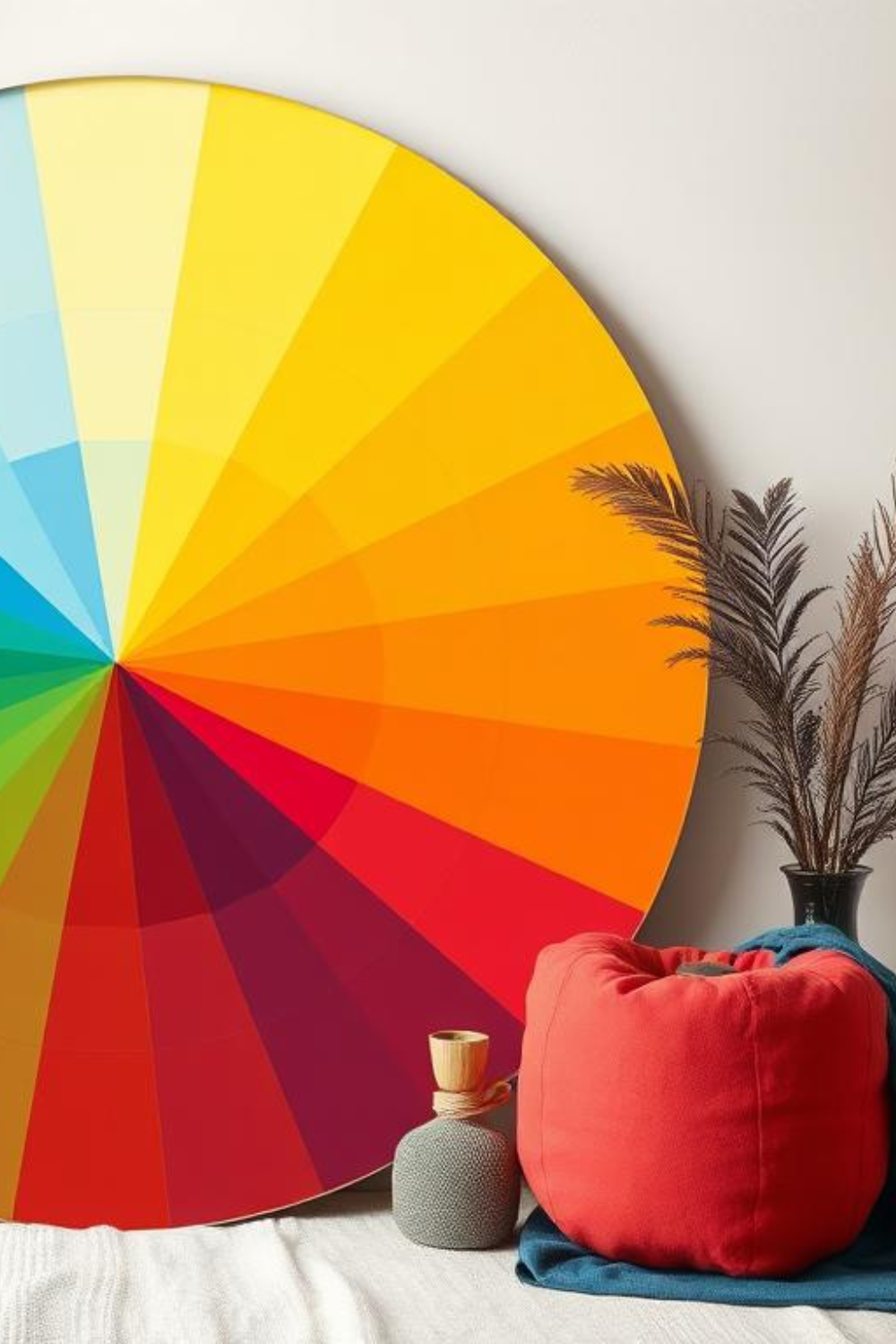
My Favorite Color Combinations for Different Rooms
Choosing the right color palette can change each room in your home. I enjoy trying out colorful home design to make unique spaces that show my personality.
In the bedroom, calming blues and soft grays make a peaceful place for rest. For living rooms, vibrant teals and mustard yellows bring energy and warmth. They make the space welcoming for family and friends.
- Kitchen: Crisp whites with bold red accents create a lively and clean look.
- Dining Area: Rich burgundy and cream tones offer a sophisticated and cozy feel.
These color combinations are not only beautiful but also flexible. You can change shades to fit your style. Whether you want a modern look or a traditional feel, finding the right color palette is crucial for a harmonious and stylish home.
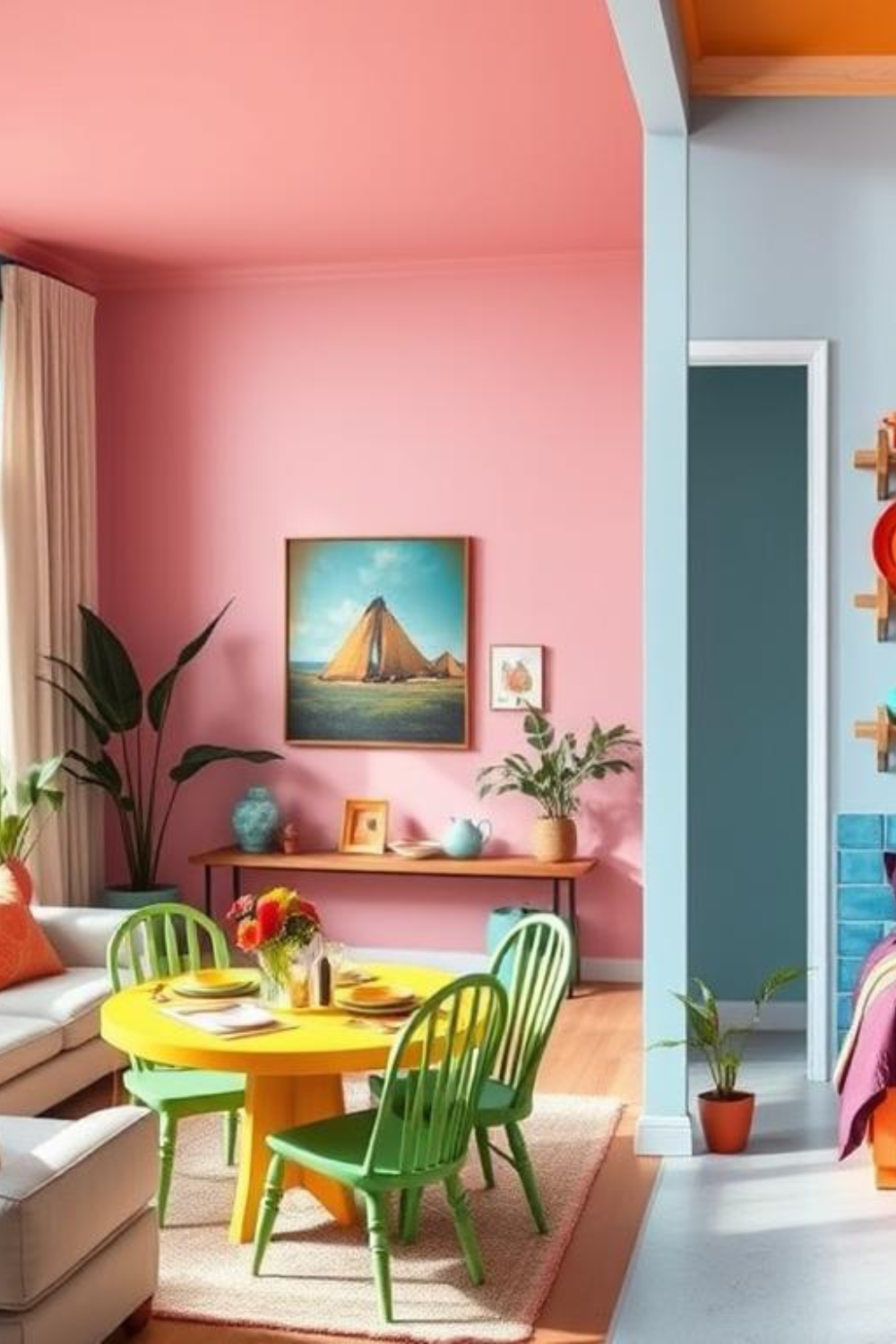
How to Create a Color Flow Throughout Your Home
Creating a smooth color flow can change your home's feel. Start with a neutral base, like beige, gray, or white. These colors work well with many decorating with color options.
Choose one accent color for all rooms. For example, a bright blue in the living room can show up in the bedroom. This makes each room feel connected.
Gradually change color intensity from room to room. Light pastels in one area can lead to deeper colors in another. This keeps the look unified while letting each room stand out.
Adding similar textures or patterns to your color scheme helps too. Using wood, metal, and textiles in matching colors adds depth. It makes your space interesting without feeling too busy.
With these home decor tips and decorating with color strategies, you can make your home welcoming and stylish. It will feel cohesive and inviting.
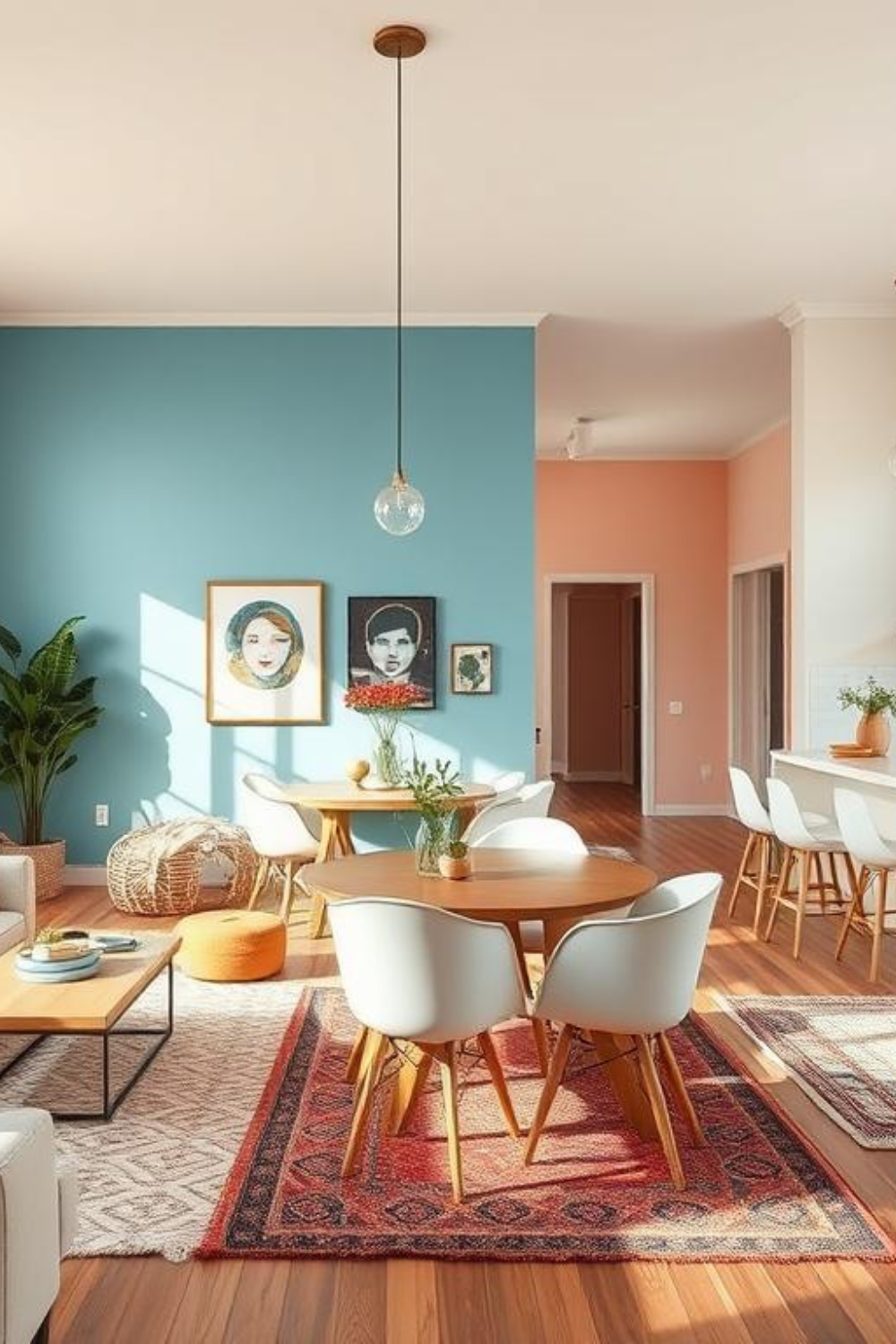
Working with Neutral Colors as a Foundation
Neutral colors are key in interior design basics. They make a space that lets your color schemes shine.
Finding the right neutral colors is important. Beige, gray, and white work well with many colors. They're great for different rooms and styles.
- Choose a neutral wall color to anchor the space.
- Incorporate vibrant accessories like cushions and rugs to add pops of color.
- Use artwork and decor pieces to introduce bold hues against the neutral backdrop.
This method keeps your home exciting yet timeless. Learning these interior design basics helps you make spaces that are both harmonious and lively.
Adding Pops of Color: My Tried-and-True Methods
Bringing color into your home is fun and easy. I enjoy decorating with color to make spaces lively without feeling stressed.
Using accent pieces is a smart move. Colorful throw pillows can change with the seasons or your mood. Bold area rugs can also make a room pop and define its space.
Accessories and artwork are great for adding color. A bold piece of wall art can grab your attention and add personality. Textiles like vibrant curtains or patterned cushions can also brighten up a room without big changes.
- Throw Pillows: Add instant color to sofas and chairs.
- Area Rugs: Define spaces and introduce bold patterns.
- Wall Art: Serve as focal points with dynamic colors.
- Window Treatments: Brighten up rooms with colorful curtains or blinds.
These small touches can make a big difference. They let you try out vibrant interior design with confidence. By placing colorful accents wisely, you can turn your home into a lively and welcoming place.
Common Color Mistakes and How I Avoid Them
Exploring colorful home design can lead to mistakes that mess up your space's harmony. Here are some common errors and how I avoid them.
- Overusing color: Too many bright colors can overwhelm a room. I mix bold hues with neutrals for a balanced look.
- Underusing color: Not enough color can make a room dull. I add color with accessories and artwork for interest.
- Ignoring lighting: Lighting changes how colors look. I test paint samples in different lights to get the right shades.
- Neglecting space size: Dark colors can make small rooms feel tight. I use lighter colors to make spaces feel bigger and airier.
By keeping these tips in mind, you can make your colorful home design better. This way, your space will feel lively and inviting.
Lighting's Impact on Color Selection
Understanding how lighting affects your space is crucial in interior design. The type and intensity of light can alter how colors appear. This makes it key when picking the right color palette.
Natural light reveals the true colors of your space. During the day, sunlight makes colors look vibrant and lively. To make the most of this, choose colors that match the natural light in each room.
Artificial lighting, on the other hand, can set different moods. Warm lights bring out reds and yellows, while cool lights highlight blues and greens. When picking your color palette, think about the lighting you use. This ensures your colors look great at all times.
- Test colors in different lighting conditions before making a final decision.
- Use layered lighting to balance natural and artificial light.
- Choose versatile colors that adapt well to various lighting scenarios.
By focusing on lighting, you can improve your interior design basics. Thoughtfully selecting your color palette with lighting in mind makes your home beautiful day and night.
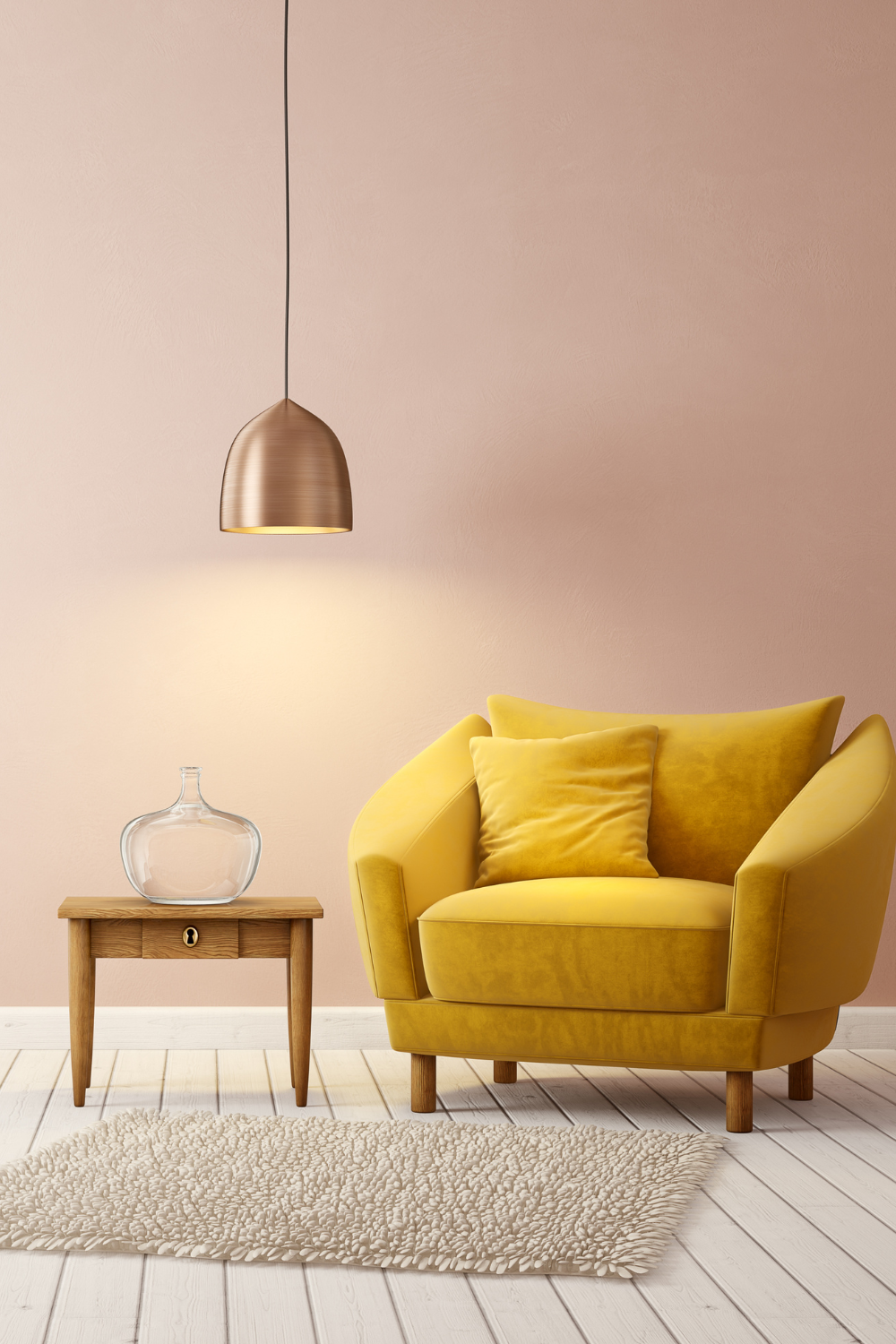
Testing Colors Before Committing: My Professional Tips
Choosing the right color schemes is key to a perfect space. Always test colors before deciding. This ensures they look good together.
Begin by painting small wall sections with samples. This shows how light changes the color at different times. Take your time; colors can shift with the light and time of day.
Try using fabric swatches to decorate with color. Add them to curtains, cushions, or upholstery. This helps you see how they fit with your design.
Use digital tools to play with color combinations. Apps and online platforms let you make virtual mock-ups. This makes it easy to see how colors work in a room.
- Create mood boards to collect all your color ideas.
- Use tape to mark color choices on walls for a real preview.
- Ask friends or family for their opinions to get new views.
By testing and experimenting with colors, you'll feel more sure about your choices. This way, you can avoid expensive mistakes later.
Conclusion: Bringing Your Colorful Vision to Life
Creating a vibrant interior design is an exciting journey. It shows off your unique personality. We've covered the basics of colorful home design, from color psychology to the color wheel. I hope these tips inspire you to try out your favorite colors in different rooms.
Your home is a canvas for your creativity. Begin with bold accents and then build a full color scheme that suits you. Think about how lighting changes your colors and avoid common mistakes.
Embracing vibrant interior design takes time. Take your time to test colors and make changes as you see fit. Trust your instincts and let your personal style show in every choice. This way, you'll create a space that looks great and feels like home.
I'm excited to see how you'll make your home a lively and welcoming space. Enjoy the journey and have fun with your colorful home design!
FAQ
How do I choose the right color palette for my home?
Start by thinking about your style and the mood you want in each room. Use the color wheel theory to find colors that go well together. Also, think about the room's purpose and natural light to pick the best colors.
What are some essential home decor tips for adding more color to a room?
Begin by adding color with accessories like throw pillows and rugs. Use bold pieces against neutral backgrounds for contrast. Mixing textures and shades adds depth and interest.
How does color psychology influence interior design?
A: Color psychology in home design sets the mood of a room. Blues and greens calm bedrooms, while yellows and oranges energize living areas. Knowing how colors make us feel helps choose the right colors for each space.
Can you explain the basics of color wheel theory for home decor?
The color wheel theory is key in interior design basics. It shows primary, secondary, and tertiary colors in a circle. Understanding color relationships helps create beautiful color schemes for your home.
What are some vibrant interior design ideas to make my home stand out?
For a vibrant interior design, use bold colors on walls and furniture. Mix colors and patterns for personality. Different textures add vibrancy without overwhelming the space.
How can I create a harmonious color scheme in my living space?
For a harmonious color scheme, balance colors for unity. Choose a primary color and add complementary or analogous colors. Neutrals balance the palette. Varying shades and tones add depth.
What are common mistakes to avoid when decorating with color?
Avoid overusing one bold color, which can clutter a space. Don't ignore lighting's effect on color. Consider room size and layout to avoid overwhelming colors. Test colors in different lights for the best look.
How does lighting affect my color selection in home design?
A: Lighting's impact on color selection is big. Natural light shows colors accurately, while artificial light can change them. Test paint samples in different lights to ensure your colors look good day and night.
What are some effective ways to test colors before committing to them?
Test colors by painting small wall sections and seeing them at different times. Use fabric swatches and digital tools to see color combinations. Mood boards help visualize your color choices before deciding.
How can I create a seamless color flow throughout my home?
For a seamless color flow, use a consistent base color or a smooth palette transition. Repeat accent colors in different rooms for unity. Use neutrals to transition colors and keep each room unique.